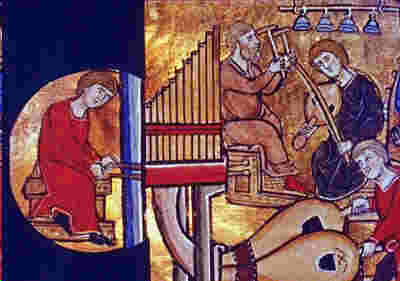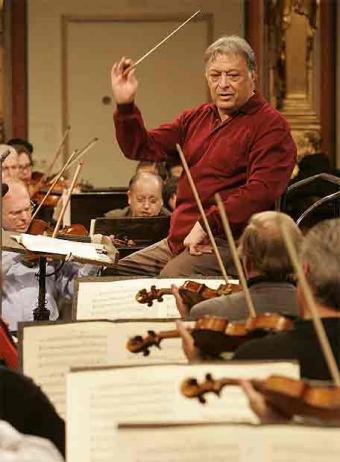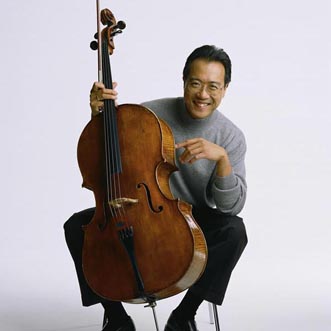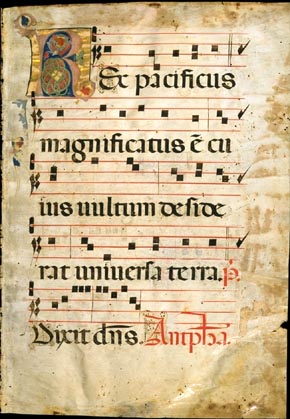
welcome to
western Music notation
Welcome to these pages, where The Muse Of Music explores the subject of
notation in Western music.
about Western Music and its notation
In a musical context, Western refers to and designates the western
part of the world, as distinguished from the East or Orient. Another name
for this part of the world is the Occident.
Western music designates the music produced by countries,
cultures, performers, and composers with aesthetic roots in the Occident.
Western music notation refers to the archetypical notation
system used by
composers or performers when they compose, write, or play Western music.
Western music's notation system is one of the most important factors that distinguishes
modern Western music from
other kinds of music. This notation system makes it
possible for composers to write music in such a way that it can be universally
communicated and recorded throughout the West, and indeed throughout the
world. It makes it possible for performers trained in reading Western
notation to play Western music.
- For an explanation of musical notation and musical notion systems, see
The Muse Of Music's page called Welcome To Music Notation:
click here.
Western music is the music of Western
civilization, the civilization that evolved in and from cultures of Greek,
Roman, and European origin. In
classical music, Western music comprehends the music and musical traditions
of Medieval times, the Renaissance, the Baroque period, the Classical
period, the Romantic period, and 20th century classical music in Europe,
America, England, Russia, and neighboring nations. In popular music, it comprehends
Acid, Bluegrass, Blues, Country, Disco, Folk, Hymn, Jazz, Metal, Neofolk,
Punk Rock, Rap, Rock & Roll, Soul, Spirituals, Swing, and more. These
musical fields make up the primary types of music in Western culture today, but no
doubt other forms exist and new ones will be developed as time goes on.
Western Modern notation (or simply modern notation) is a specific and particularly important
collection of closely related notation
systems that dominates Western music composition and performance today. Modern Western notation was originated
by and for European classical music, but it is so successful it is now used by musicians
who play music typical of many other genres and styles throughout the world,
including some Oriental ones, as well
as by the vast majority of classical and popular musicians of the Western tradition.
All of these specific Western musical traditions have one thing in
common: they adhere to and employ a similar basic musical notation system and a similar
collection of musical composition methods, standards, performance practices, and
musical instruments.
Western notation is here to stay
There's no getting around the fact that Western notation is here to stay.
It's entrenched because: 1) it's the de facto standard technique for
creating and writing
Western music, 2) Western music is intrinsic to world culture, and 3)
Western notation is a brilliantly designed technical system for playing,
composing, and recording musical sounds, as well as a theory for explaining
how and why music as the effects on listeners that it does.
The technical design of Western music has evolved over thousands of years
as a result of an ongoing random and piecemeal analysis of the physics,
mathematics, and neural character of sound, as well as from systematic
studies and pragmatic experimentation conducted by thousands of folk and
professional musicians, scientists, mathematicians, religionists, and
philosophers.
The development of Western musical theory reaches as far back as the
research of Pythagoras, the sixth century BCE Greek philosopher,
mathematician, and musician, whom many scholars credit with founding the
science of music. He's the same Pythagoras who's credited with devising the
famous geometric theorem you probably studied in high school, the one that
states that in a right-angled triangle the area of the square of the
hypotenuse is equal to the sum of the areas of other two sides the squares
of the other two sides.
According to legend, Pythagoras discovered that musical notes could be
translated into mathematical equations when one day he passed blacksmiths at
work, and the thought occurred to him that the sounds emanating from their
anvils were beautiful and harmonious. He decided on the spot that whatever
scientific law caused this to happen must be mathematical and could be
applied to music and began a serious investigation of the properties of
sounds.
Later he discovered that the ratios between successive notes hear by the
ear are relevant to such factors as string length, and that a note sounded
by a plucked string that is higher in pitch than its predecessor is
harmonious only if its length is half that of the first; also, he discovered
that the next note above the first one is harmonious only if it is produced
by a string that is 2/3 its length, and so on.
In part because of musical and other non-musical effects like these,
Pythagoras created a theory of numbers. He believed that the planets and
stars moved according to mathematical equations, which correspond to musical
notes; hence they produce a symphony. Subsequently, Plato adopted
Pythagoras' ideas and described astronomy and music as twinned studies of
sensual recognition: astronomy for the eyes, music for the ears, and both
requiring knowledge of numerical proportions.
Notions like these stimulated intense investigation into the underlying
physical and mathematical nature of music among Pythagoras' students and in
the Western world at large. They led to the ancient metaphysical concept of
the harmony or music of the spheres that became popular and influential in
the Middle ages and which continued to stimulate intense investigation for
centuries afterward.
In large measure, as a result of these in-depth Western World aesthetic
and scientific investigations into the nature of sound, its relation to
music, and its affect on the human psyche, Western music has evolved into
one of the world's most powerful, sophisticated, pristine, subtle,
self-consistent, well structured, and technically complex composition and
performance tools available to musicians; and so has the music that creative
Western musicians have succeeded in producing. Western music is so
sophisticated and complex in so many subtle ways that The Muse Of Music must
decline to explain in detail here the nature of Western music technology and
the specific reasons for its possession of these attributes.
Unfortunately, despite the inherent superiority of Western music
technology, the physical and cultural isolation of the West tended to
suppress the Eastward expansion of these innovative musical ideas and
inventions to other parts of the world until relatively recent times.
Why and how did Western musical theory, notation, composition methods, performance practices, and
instruments initially catch on in the West? Why do they remain standards
there? Why did this superior musical technology eventually spread to the East?
Largely because of
the diminishment of cultural barriers and improvements in communication
technology.
For good reasons, indigenous systems for playing and writing music
continue to appeal to many musicians and audiences in regions, countries,
and cultures around the world. However, the Western musical tradition offers
benefits that have caused Western music to be adopted by most musicians in
most cultures everywhere:
- The Western notation system is flexible; it adapts readily to
preexisting traditional ways of playing that encourage its rapid acceptance
and adoption.
- Western music allows for the
invention and expression of new kinds of music and new composition and performance techniques.
- Many musicians who compose or play Western music are born and raised in the Western world.
- Many Westerners are immigrants from other nations, or they're children
of immigrants. They become enculturated in Western traditions from the time of birth,
or they move with their parents to a Western nation at an early age and are raised in its ways.
Later in life, a portion of them become musicians and eventually return to
their homelands or to other parts of the world, where they perform Western
music and teach others about what they've learned.
- Some musicians who are native to the Orient are influenced by Western musical traditions
in situ;
they become acculturated to Western music by a variety of different kinds
of Western influences that act on them in their native surroundings.
The enculturation process is straightforward and easy to understand:
people brought up in a culture absorb it from their surroundings in their
formative years; they soak it up starting from birth as a blotter soaks up excess ink.
But acculturation is a more complex and subtle process. Here are two
living examples of how and why it has worked:
Zubin Mehta
As an example of acculturation, consider Zubin Mehta, the famous
conductor of Western music and Western orchestras. He was born into a Parsi
family in Bombay (now Mumbai), India, the son of a father who was a
violinist and founding conductor of the Bombay Symphony Orchestra. He
attended a Catholic high school and college in Mumbai and became a music
student in Vienna at the age of 18. Also at the same Vienna school with Zubin Mehta were conductor Claudio Abbado, an Italian, and Argentinian-born
conductor–pianist Daniel Barenboim, who holds citizenship in Argentina,
Israel, and Spain.
- At right, above, Zubin Mehta is pictured in casual dress during a practice session
with an orchestra.
yo-yo ma
Yo-Yo Ma, the famous cellist of Chinese extraction, provides us with
another example of acculturation.
His father, Hiao-Tsiun Ma, was born in China and studied Chinese music
there. In 1936 he escaped the Japanese war by moving to Paris, where he
studied Western music at the Sorbonne. During the German occupation of
Paris, he memorized Bach in daylight hours and at night played the Bach he
had memorized for solace during blackouts.
Yo-Yo's father received a doctor's degree in musicology, with Chinese
music as a specialty, and performed professionally as a violinist.
Yo-Yo was born in Paris in 1955 and his family moved to New York in 1961
when he was five years old. He was raised in a musical family (his mother
was a singer) and showed musical promise very early by taking up the cello
at the age of four. His father, being schooled in Western music, and Yo-Yo,
being raised by musical parents in a New York household, is it any wonder
that the youngster absorbed Western music?
- At the right, Yo-Yo Ma with his cello.
Today, when Yo-Yo isn't playing music in the Western tradition, he
honors his father's memory and demonstrates his influence by playing
Chinese and Oriental music in addition to Western varieties.
The Muse Of Music has chosen to embellish the Muse's welcome page on
music with a piece called Blue
Little Flower, a Chinese traditional song from an album called Silk
Road Journeys: When Strangers Meet, in which Yo-Yo Ma plays the cello.
Ma has been instrumental in forming the Silk Road group of musicians and in
playing with them, displaying his versatility and demonstrating that
there's no need to give up other musical traditions in order to acculturate
to Western ones.
- Hear a selection from Blue
Little Flower by visiting the page called The Muse Of Music Welcomes
You: click here.
It's not difficult to appreciate Mehta's acculturation into Western music
once the in-home influences of his younger years are taken into account; nor
is it difficult to see why Ma trained and developed in the Western
tradition. But what about musicians who were not brought up in
Western-looking households yet who have adopted Western music? How do they
come under its spell?
Starting in the mid-20th century and continuing today, worldwide
communications have improved to the point that Western music reaches ears
around the world. Other musicians not brought up Western musical traditions,
who in earlier times would not have been exposed to Western music, are now
hearing and embracing it because they find in it so much that is good,
because it expresses fresh and unfamiliar sounds, new ideas, and new points
of view, or because it offers opportunities for them to reach very large
audiences. theyfind Western music to be a vehicle for expressing sounds and
ideas they cannot otherwise express.
History
Western music and Western notation began with plainchant, the first music
and musical notation system of Europe. Plainchant is the music that was sung by monks of the
Roman Catholic Church starting in the 8th century CE. It is still sung in
monasteries today, although less often than in the Middle Ages; and Catholic
priests sing in a style similar to plainchant when they celebrate High Mass.
Plainchant is used to accompany the text of the mass and the canonical
hours, or divine office. A select few secular choirs who view plainchant from a musical, not a
religious, perspective, specialize in ancient music; they sing plainchant at
live performances and make recordings that can be purchased.
Plainchant forms the core of the musical repertoire of the Roman Catholic
Church. It consists of about 3,000 melodies collected and organized during
the reigns of several 6th- and 7th-century popes. Plainchant is also known
as Gregorian chant because Pope Gregory I, the Great, pope from 590
to 604, was most instrumental in collecting and codifying these chants.
Plainchant notation did not employ a
staff and used neuma or pneuma, a system of dots and strokes
placed above the text instead of the musical notes with which contemporary
musicians are familiar. The music and the notion
system did not have the ability to express precise pitches or times, but that
was acceptable then because plainchant deliberately diminishes the
importance of changes in pitch or time.
Although neuma or pneuma symbols evolved into the symbols
we use to represent musical notes today—if one squints,
once can can recognize a vague similarity between vertical strokes and
checkmarks or dots and oval shapes—it would be hard for most
contemporary musicians to read plainchant because it is radically different
from modern notation.
 At
the right is an image of a plainchant score dating from the 13th century.
Notice the dots and checkmarks and the staff (also called stave) consisting of red lines. The staff was not invented until
the 11th century by Guido d'Arezzo, an Italian Benedictine monk who lived
from 995–1050. His idea was to combine a staff with the neumes that were
introduced in the 8th century. Guido d'Arezzo's staff had 4 lines. In turn,
the 4-line staff led to development of the 5-line staff in the 14th
century. It is safe to say that without today's five-line staff, there
would be no practical way to write modern music and therefore no composers.
At
the right is an image of a plainchant score dating from the 13th century.
Notice the dots and checkmarks and the staff (also called stave) consisting of red lines. The staff was not invented until
the 11th century by Guido d'Arezzo, an Italian Benedictine monk who lived
from 995–1050. His idea was to combine a staff with the neumes that were
introduced in the 8th century. Guido d'Arezzo's staff had 4 lines. In turn,
the 4-line staff led to development of the 5-line staff in the 14th
century. It is safe to say that without today's five-line staff, there
would be no practical way to write modern music and therefore no composers.
Plainchant is
flat, slow-paced, regular, almost monotonic and
otherworldly music. Yet anyone who has heard it
can attest to the fact that it can express a surprising amount of musical
complexity, despite the difficulties with pitch and time, and other
limitations inherent in its notation system.
The plainchant notation system succeeded because it was
up to the tasks set for it at the time. First, there was no need for a more
more powerful notation system because the music was so simple and lacked
variety. Second, the monks who sang plainchant were schooled in what to
sing before they read the score; they only needed an occasional glance at
the melody and words, one that would remind them of what to sing next.
Originally, most secular music was not written down because composers who
wanted to record their own music were too poor to buy writing materials;
only the Church could afford them. However, as people became affluent and music became more and more secular in character and purpose,
pressure grew to develop a notation system capable of expressing more and more musical
subtlety and variety. More and more music was being played
by musicians before a greater range of audiences in more and more places; a
way was needed to distribute music by other than personal contact. These
capabilities and needs spurred
musicians to innovate musical notation systems that could keep up, and Western
music evolved gradually to meet these challenges.
For example, the stave appeared in the 10th
century; a system of fixed note lengths arose in the 14th century; and
vertical bar lines that divide the staff into sections appeared in the 15th
century. By the early 16th century, notation had assumed much of its modern
form, with the essential components of staff, clef, , time signature, and
durational values, though bar lines only gradually became widespread during
the 16th and 17th centuries as an aid in ensemble performance. Regular measures (bars) became commonplace by the end of the 17th
century.
modern notation systems—overview
As indicated above, today one notation system, called Western notation, dominates Western music.
It takes its name from the fact that it was developed by and for classical
European or Western musicians and for Western audiences. Despite
its name and its history, Western notation is not limited to countries in the
West; it is used in many non-Western countries around the world, as well as in Europe.Yet, despite its popularity, some other
countries find good and proper reasons for continuing to use notation
systems of their own devising, instead of or in addition to Western
notation.
For example, in modern times, raga, the classical music of
northern India, employs a
notation system called sargam, which names seven basic pitches of a
major scale. in Java and Bali, several notation systems were devised
by scholars at the end of the 19th century, initially for archival purposes.
An Indonesian notation system for the gamelan has been mapped into the
Western staff. In Chinese music, sheet music is written with numbers,
letters, or native characters to represent notes in order.
It's not The Muse's purpose here to enumerate or explain any of these
notation systems in detail. Rather, by touching on a few such systems, the
Muse hopes to make a single point, namely that a large number of widely different music notation systems
have been devised, many of which are now in use. This is to be expected,
since music is so important to people all over the world.
Why are there so many different notation systems extant? Why are so many
needed?
Many factors have caused
cultures, scholars, or musicians to develop their own notation
systems rather than to adopt or adapt preexisting ones. Many factors have
caused them not to abandon their own notation systems in favor of a standard
notation scheme or in favor of the scheme of another culture or nation. Many
factors cause new notation systems to be developed as time goes on. Here are
but a few:
- Worldwide communications are only a relatively recent development;
musical notation systems have existed for a very long time. At the time a
particular culture's notation system was evolving, that culture may have
been unaware that other cultures possessed notation systems that could have
been adapted to meet its needs.
- A culture's musical instruments may be very well be unique. theymay
possess different ranges, tones, fingerings, or other musical qualities that
cannot be expressed in another culture's musical notation system.
- One culture's musical style may call for a correspondingly unique
notation system that can express its individuality.
- The symbol system of a culture may be incompatible with that of another
culture. Oriental symbol systems, for example, do not lend themselves to
Western notation.
- Different musical notation systems serve different purposes. For
example, one system may be designed to make the symbols easy to learn while
another system may be designed to use symbols that facilitate musician
practice sessions; other systems may focus on using as few symbols as
possible or on controlling a computer.
 |
| A notation system will reveal the relationship musical
notes written on paper and notes played on an instrument. Here we see the
relationship between the notes on a 5-line stave and the notes on a piano
keyboard. |
The modern Western notation system is a de facto standard that is taught
and learned by musicians throughout the world, who pass their knowledge to each
other, from school to pupil, teacher to pupil, and generation to generation.
But it is not the be-all and end-all of notation systems, even among
musicians for whom Western notation is primary. Just as some people speak or
write more than one language, some musicians for whom modern notation is
primary play and write in more than one musical notation system.
more about modern Western notation
This feature is continued on the next three pages.
- Visit the pages that follow to further explore modern musical notation
of the Western Tradition:
click here.
—Page
1,
2,
3,
4—






